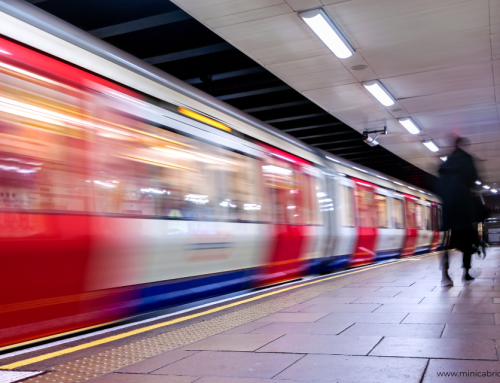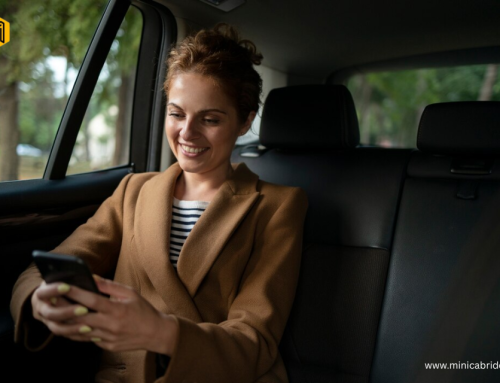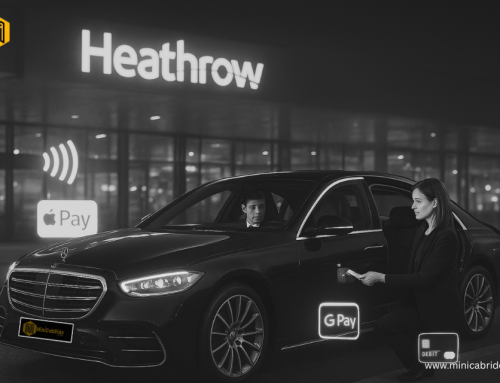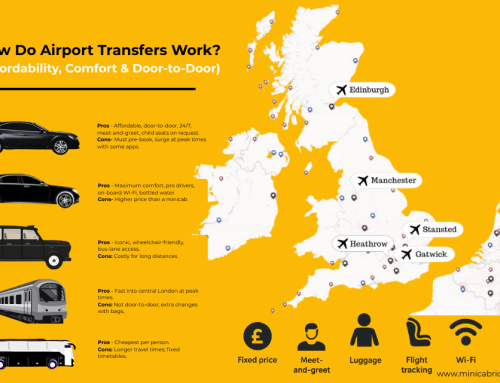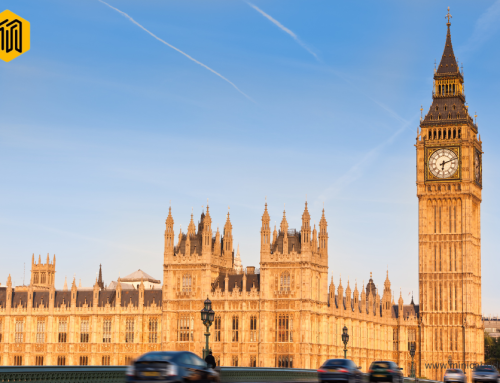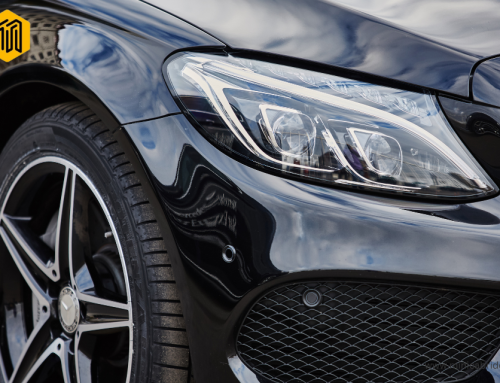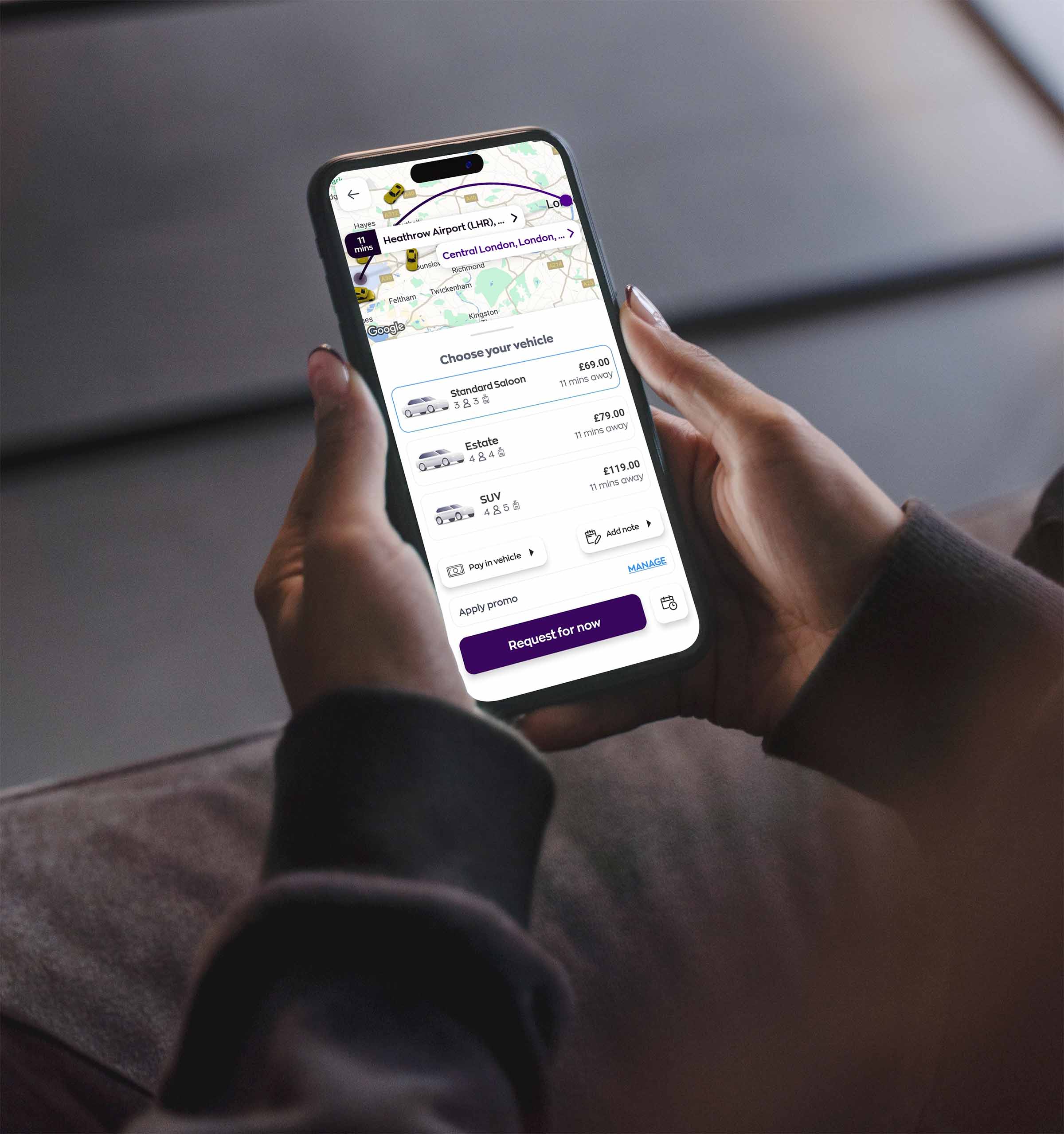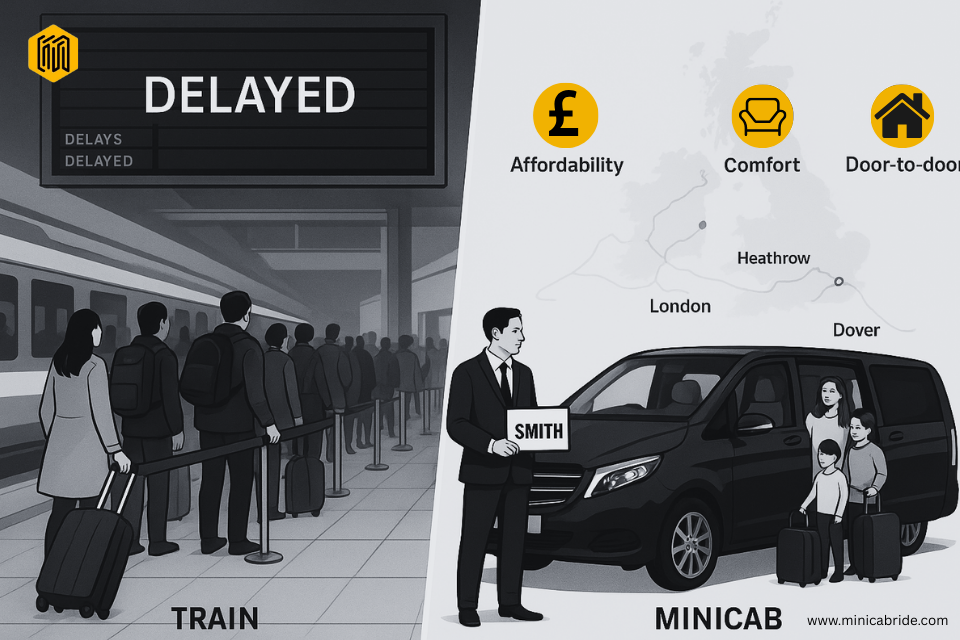
Door-to-door convenience, flexible routing, and actual total-journey value are driving more UK travellers to choose licensed minicabs (private hire vehicles) for intercity trips—especially for airport transfers, cruise port transfers, and city-to-city travel. Below is a data-led look at how private hire is outcompeting the rails on affordability, comfort, and end-to-end time—plus a practical buyer’s guide and a ready-to-design infographic brief.
Table of Contents
ToggleThe backdrop: fares up, reliability mixed, demand surging at gateways
- Rail fares have risen faster than the rate of inflation. ORR’s official figures show rail fares across Great Britain increased by 5.1% in 2025, outpacing RPI (3.2%). Regulated fares rose 4.5% (England/Wales cap 4.6%; Scotland +3.8%).
- Punctuality is inconsistent on long-distance routes. ORR’s “On Time” measure (within 59 seconds of schedule) was 68.1% in the latest quarter; over the 12 months to Mar-2025, 67.0% of recorded station stops were “On Time.”
- Air and cruise gateways are busier than ever. Heathrow hit record volumes in 2025; CAA data confirm sustained airport growth, while DfT reports 3.1 million UK cruise passengers in 2024, with ~2.7 million (88%) via Southampton—demonstrating sustained demand for ground transfers to/from ports.
These dynamics amplify the appeal of pre-booked minicabs, which offer families, groups, and time-sensitive travelers predictable, point-to-point journeys.
1- Affordability: the per-vehicle advantage (especially for 2–6 travellers)
Train prices in Britain vary significantly by time, route, and the level of booking. Off-peak bargains exist—but walk-up and peak tickets can be among Europe’s priciest, and “off-peak” times aren’t uniform nationwide.
By contrast, minicab fares are typically fixed per vehicle, not per person—so parties of 2–6 often pay less per head than rail, with no extra fees for luggage or seat reservations. Typical published, all-in examples:
- Heathrow ↔ Southampton (cruise terminals): £134–£160 for a standard saloon (fits 3–4 travellers + luggage). For four people, that’s ~£33–£40 per person.
- Heathrow ↔ Dover (cruise terminals): many operators list ~£180–£215. With four travellers, £45–£54 per person.
- London ↔ Manchester (train comparison): operator pages show off-peak singles from ~£54–£76 each (often more at peaks or short notice). A family of four can easily exceed £220–£300 one-way, before seat allocations, luggage discomfort, or taxis at either end.
Meanwhile, rail fares rose 5.1% year-on-year in 2025, reducing the likelihood that groups will find rail cheaper than a pre-booked car on busy weekends or at short notice.
Bottom line: If you’re a solo traveller booking months ahead, an advance train ticket may be the way to go. But for 2+ travellers, late-bookers, or anyone with luggage/children, a fixed-price minicab is often equal or cheaper on a per-person basis—with far fewer add-ons.
2- Comfort: private space that adapts to you, not the timetable
What you pay for in a PHV is, primarily, control and comfort:
- Private cabin, private route. No standing in aisles, luggage juggling, or seat-hunting on crowded services. You set the climate, stops, and music; you can sleep, work, or chat without worry.
- Luggage sanity. Drivers plan for suitcases, strollers, golf bags, mobility aids, and will stage an appropriate vehicle (estate/MPV), load your bags, and wait while you clear immigration or collect cases.
- Family-friendly. Child seats are available upon request; please note that platform changes are not permitted with toddlers in tow.
- Accessibility. Many operators can pre-arrange vehicles for passengers with reduced mobility, offering kerbside or meet-and-greet assistance.
- No “ticket class” stress. Trains often require seat reservations for family seating or quiet areas; minicabs, however, provide the entire vehicle by default.
When reliability matters—red-eye arrivals, late-night sailings, tight connection windows—that door-to-door, one-driver promise is hard to beat, especially given current UK punctuality metrics.
3- Door-to-door time: the hidden minutes that trains can’t erase
A common misconception is that trains are always faster because the line-haul (station-to-station) time is shorter. For real trips, add:
- Origin taxi/Uber to the station (10–40 mins in big cities).
- Buffer for ticketing/security/boarding (10–30 mins).
- Platform transfers or changes (5–20 mins).
- Destination side cab from the station (10–45 mins).
By the time you add first-mile + last-mile + buffer, a “2h 30m” intercity train can consume 3.5–4+ hours door-to-door, especially with luggage or kids. A direct minicab often shrinks the end-to-end time, even when pure line-haul is similar or slightly slower, with far less stress.
Use cases where minicabs win
A) Airport transfers (inbound & outbound)
- Arrivals at Heathrow Airport, Gatwick Airport, and Manchester Airport face unpredictable immigration & baggage timings. A private hire driver can track your flight, adjust pickup, and offer a meet-and-greet in arrivals, then go straight to your destination—no hauling bags onto commuter services. (CAA’s monthly airport datasets show sustained high passenger volumes—another reason to avoid rail crowding at peaks.)
Civil Aviation Authority - Example costs (saloon): Heathrow ↔ Southampton £134–£160; Heathrow ↔ Dover £180–£215. For families of 3–5, the per-head beats or matches off-peak rail—and it’s vastly more convenient.
B) Cruise-port transfers (Southampton, Dover, Portsmouth)
- The UK handled ~3.1 million cruise passengers in 2024, with Southampton alone accounting for around 2.7 million. On peak embarkation weekends, local rail and taxi services near stations are often saturated. Pre-booked minicabs stage vehicles at berths and manage oversized luggage—critical for cruisers.
- Southampton’s growth underscores why door-to-ship transfers are surging; the port welcomed ~3 million passengers and contributed over £ 1 billion to the regional economy in 2024/25.
C) City-to-city runs (with detours)
- Need London → Bristol → Bath → Cotswolds in one day? Trains can’t chain these stops. A minicab/MPV converts a multi-leg rail day into a single continuous, bags-in-boot itinerary.
- On routes like London ↔ Manchester, rail can be quick at advance off-peak prices—but for 3–6 travellers, or if you must depart outside off-peak windows (which vary by operator/region), a car becomes both simpler and competitive on price.
Quick data snapshots
- Rail fare trend: +5.1% (2025 vs 2024). Regulated fares +4.5% (England/Wales cap 4.6%; Scotland +3.8%).
- Rail punctuality: “On Time” ~68% (latest quarter/rolling year).
- Cruise passengers (UK 2024): ~3.1 m total; ~2.7 m via Southampton (88%); Dover ~75k; London 102k; Liverpool 50k; Portsmouth 54k.
Heathrow volumes: record-breaking month/day in 2025 (queue-free security claims), underlining ground-transfer demand.
Worked comparison: family of four, airport → cruise port
Scenario 1: Heathrow → Southampton (embarkation day)
- Rail (Heathrow Express + tube or coach + mainline rail + local taxi): multiple legs; fares vary; add seat reservations and luggage hassle.
- Minicab: £134–£160 per vehicle; driver meets you in arrivals; ~1h15–1h30 to ship (traffic-dependent). Per-person ~£33–£40 for four people—often cheaper than combined train/taxi legs and much simpler.
Scenario 2: Heathrow → Dover (embarkation day)
- Rail (tube/Elizabeth line + Southeastern + local taxi): at least one interchange with baggage; fares per person.
- Minicab: ~£180–£215 per vehicle, per-person £45–£54 for four; door-to-gangway with no transfers.
When trains still make sense
- Solo travellers booking far in advance for straightforward station-to-station trips (e.g., London–Manchester off-peak from ~£54–£76).
- Central-to-central journeys where major stations serve both ends and you’re travelling hand luggage only.
- Budget-absolute trips where you can accept longer itineraries with extra changes to chase an advance fare.
How to choose the right minicab operator (checklist)
- Licensing & insurance : Verify that the operator is TfL- or council-licensed; drivers should display their IDs; and vehicles should carry PHV plates.
- Fixed upfront pricing: Insist on a fixed, all-inclusive quote (parking, drop-off, tolls, waiting). “Meet & greet” should specify free waiting time for flight delays.
- Vehicle match: Confirm seat and luggage arrangements. For 4+ people or with heavy bags, request an estate/MPV.
- Real-time tracking: Flight monitoring (for airport pickups) and live driver tracking help reduce anxiety after landing.
- Policies that suit you: child seats, wheelchair access, pet travel, and invoice/VAT receipt when needed.
- Reviews & Support: 24/7 dispatch, phone, and WhatsApp support, along with clear cancellation terms.
Practical tips to save more
- Share the ride (families/couples): Your per-head cost is more affordable than rail.
- Book early in peak months (July–September, December), especially for Southampton/Dover embarkation weekends.
- Bundle (return + wait & return post-cruise)—operators often discount.
- Staggered sightseeing en route (Stonehenge on Heathrow→Southampton, Canterbury on Heathrow→Dover) with hourly waiting rates; cheaper than booking separate day tours.
The verdict
For airport arrivals, cruise embarkations, and complex city-to-city itineraries, licensed minicabs increasingly deliver the best overall experience:
- Cheaper per person for groups (and often competitive even for couples) thanks to fixed per-vehicle pricing.
- Less time lost in first/last-mile links, queueing, changes, and seat hunts.
- Greater comfort and zero luggage stress, with meeting-point pickups and flexible stops.
- Predictability in a context where rail punctuality and fare volatility can undo the headline timetable.
If you’re planning a Heathrow/Gatwick arrival, a Southampton or Dover sailing, or a multi-city itinerary with luggage and kids, a pre-booked minicab is often the smartest, calmest, and—surprisingly—most economical way to go.


